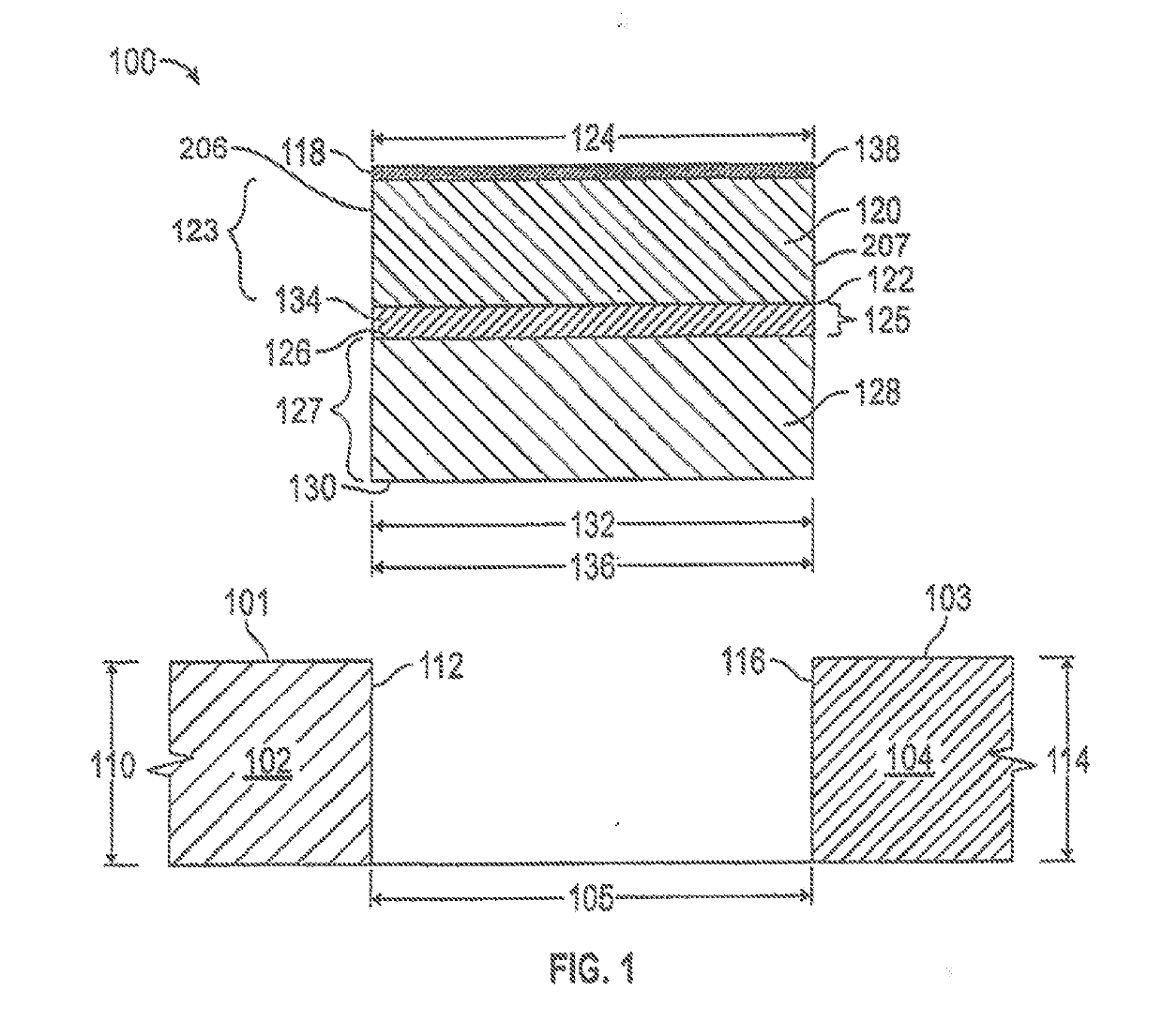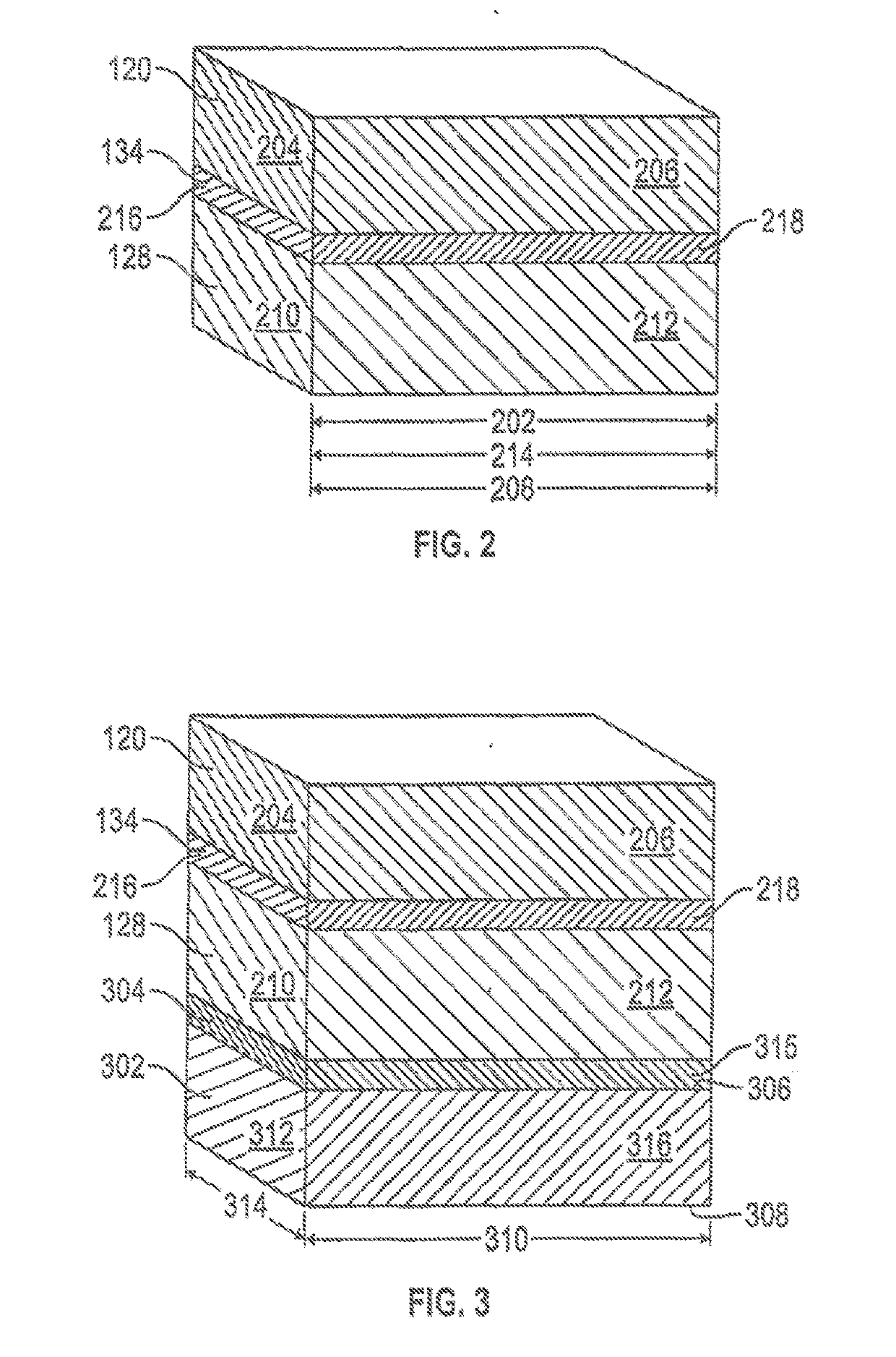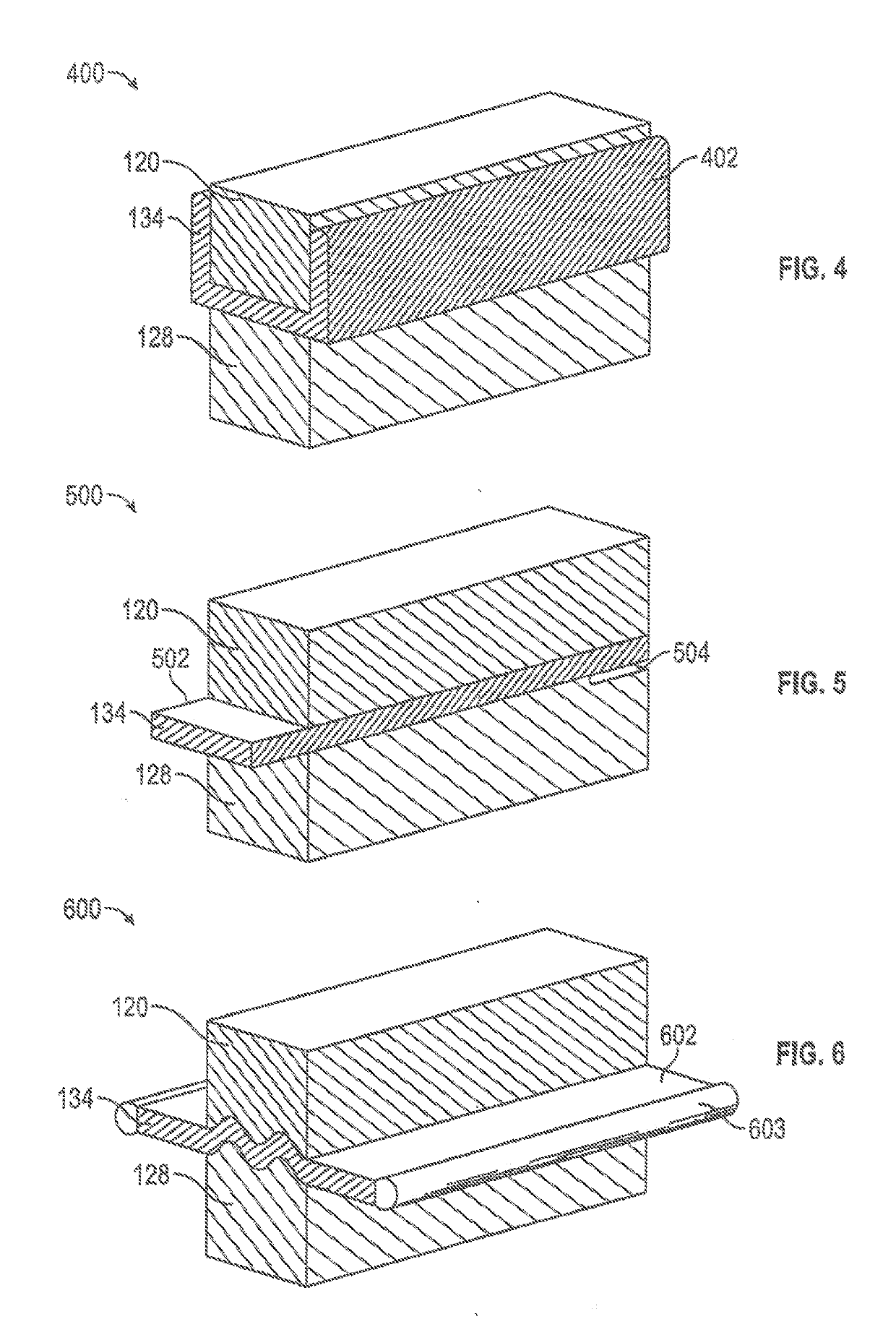Joint seal system with winged barrier
a seal system and seal technology, applied in the direction of mechanical equipment, other domestic objects, synthetic resin layered products, etc., can solve the problems of seal system failure, thick and inflexible seals, and joints that are subject to damag
- Summary
- Abstract
- Description
- Claims
- Application Information
AI Technical Summary
Benefits of technology
Problems solved by technology
Method used
Image
Examples
first embodiment
[0048]The joint seal 100 may further include an elastomer 138, such as silicone, adhered to the first body top 118 and / or to the bottom of the bottom-most layer, the second body bottom 130 in the
[0049]Referring now to FIG. 3, in another embodiment, the joint seal 100 may further include a third body of compressible foam 302 and a second barrier 304. In this embodiment, the third body of compressible foam 302 includes a third body top 306, a third body bottom 308, a third body length 310, a third body first end 312, a third body width 314, and a third body first side 316. The first body length 202 and the third body length 310 are equivalent, and the first body width 124 and the third body width 314 are equivalent. In this embodiment, the second barrier 304 is adhered to the second body of compressible foam 128 at the second body bottom 130 and is adhered to the third body of compressible foam 302 at the third body top 306. The second barrier 304 would include a layer of a heat barri...
embodiment 400
[0055]Referring now to FIG. 4, in an alternative embodiment 400, the joint seal includes a first body of compressible foam 120, a second body of compressible foam 128, and a barrier 134 adhered to both the first body of compressible foam 120 and the second body of compressible foam 128, wherein the compressible bodies have equivalent lengths and widths but the barrier extends beyond the edge of the first body of compressible foam 120 on at least one side to provide a wing 402 can be turned up (or down) and adhered, at installation, to the substrate 102, 104. Additionally, a slow drying adhesive may be applied to the wing 402 before insertion. Traditional, faster drying adhesive, such as epoxy, are to be avoided as they can cure before insertion.
[0056]This embodiment allows the barrier 134 to extend past the compressible body laminations and be used as wing 402 to be set into the concrete substrate 102 or polymer nosing 804, as illustrated in FIG. 8. This is helpful for split face co...
PUM
| Property | Measurement | Unit |
|---|---|---|
| width | aaaaa | aaaaa |
| height | aaaaa | aaaaa |
| height | aaaaa | aaaaa |
Abstract
Description
Claims
Application Information
 Login to View More
Login to View More - R&D
- Intellectual Property
- Life Sciences
- Materials
- Tech Scout
- Unparalleled Data Quality
- Higher Quality Content
- 60% Fewer Hallucinations
Browse by: Latest US Patents, China's latest patents, Technical Efficacy Thesaurus, Application Domain, Technology Topic, Popular Technical Reports.
© 2025 PatSnap. All rights reserved.Legal|Privacy policy|Modern Slavery Act Transparency Statement|Sitemap|About US| Contact US: help@patsnap.com



